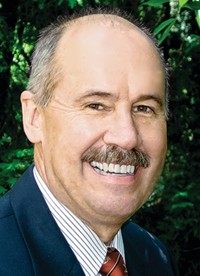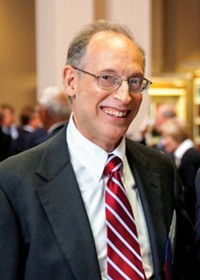Advertisement
Grab your lab coat. Let's get started
Welcome!
Welcome!
Create an account below to get 6 C&EN articles per month, receive newsletters and more - all free.
It seems this is your first time logging in online. Please enter the following information to continue.
As an ACS member you automatically get access to this site. All we need is few more details to create your reading experience.
Not you? Sign in with a different account.
Not you? Sign in with a different account.
ERROR 1
ERROR 1
ERROR 2
ERROR 2
ERROR 2
ERROR 2
ERROR 2
Password and Confirm password must match.
If you have an ACS member number, please enter it here so we can link this account to your membership. (optional)
ERROR 2
ACS values your privacy. By submitting your information, you are gaining access to C&EN and subscribing to our weekly newsletter. We use the information you provide to make your reading experience better, and we will never sell your data to third party members.
People
Dispute on Theory's Origins Goes Public
Debate is over credit for initial idea that led to Woodward-Hoffmann rules
by Stu Borman
November 29, 2004
| A version of this story appeared in
Volume 82, Issue 48
HISTORY OF CHEMISTRY
For years, a dispute about the origins of an important theory on the course of chemical reactions, known as the Woodward-Hoffmann rules, has been simmering behind the scenes. The matter has now come into public view with publication of a detailed account by Cornell University chemistry professor Roald Hoffmann in Angewandte Chemie [Int. Ed., published online Nov. 19, http://www3.interscience.wiley.com/cgi-bin/abstract/109799162]. It's an issue that is unlikely ever to be resolved.
At the heart of the dispute is a conversation that took place more than 40 years ago between Elias J. Corey and the late Robert B. Woodward. Corey, currently an emeritus professor of chemistry at Harvard University, won the 1990 Nobel Prize in Chemistry for his work in organic synthesis. Woodward, who was Corey's colleague at Harvard, won the 1965 Nobel Prize in Chemistry for his synthetic work. Hoffmann and chemistry professor Kenichi Fukui of Kyoto University shared the 1981 chemistry Nobel for independently developing theories on which the Woodward-Hoffmann rules are based. Woodward would almost certainly also have shared the 1981 Nobel Prize had he not died two years earlier.
Questions had arisen in 1964 about the mechanism of a series of stereospecific organic cyclization reactions (now called electrocyclic reactions), such as the conversion of hexatriene to cyclohexadiene. According to Corey, Woodward asked Corey's opinion, and Corey told Woodward that he believed he had an explanation--that the course of such reactions was based on symmetry properties of the reactant's molecular orbitals.
Also according to Corey, the next day, in Corey's presence, Woodward explained the proposed role of molecular orbital symmetry in cyclization reactions to a visiting professor, Douglas E. Applequist, now emeritus professor of chemistry at the University of Illinois, Urbana-Champaign. Woodward described it as his own idea, without acknowledging any role by Corey.
Corey decided not to challenge Woodward about failing to credit him. For one thing, Corey was a 35-year-old professor at the time, whereas Woodward was a senior colleague at the top of his game--he received his Nobel Prize the following year.
When Corey won the Priestley Medal this year, he referred to the conversation in his award essay: "On May 4, 1964, I suggested to my colleague R. B. Woodward a simple explanation involving the symmetry of the ... molecular orbitals for the stereoselective cyclobutene/1,3-butadiene and 1,3,5-hexatriene/cyclohexadiene conversions that provided the basis for the further development of these ideas into what became known as the Woodward-Hoffmann rules" (C&EN, March 29, page 42). This statement was the first time Corey made his claim publicly.
"In accordance with the advice of the ACS staff, in my Priestley presentation I tried to summarize my scientific career and contributions," Corey tells C&EN. "I did so as honestly and concisely as I could. I am certain of the absolute truthfulness of the short statement on the orbital symmetry idea. I hope that my simple account of a historical fact as I know it will be taken for what it is." Corey declines to discuss the matter any further. He also declined an offer from Angewandte Chemie to reply to the paper Hoffmann has now published.
However, Corey has discussed the matter privately over the years, including in letters to Hoffmann in the early 1980s. These are among Hoffmann's publicly accessible papers in the Cornell University Library, and Hoffmann quotes from that correspondence in his new paper.
In the paper, Hoffmann says it's possible that Woodward had already formulated a possible solution to the electrocyclic reaction problem in his mind but didn't acknowledge that in his May 4 conversation with Corey. If so, Corey's claim that it was he who first conceived the solution is incorrect. However, Corey's correspondence with Hoffmann states that Woodward was initially "not willing to accept my suggestion" of the role of orbital symmetry in the reactions.
Hoffmann once asked Woodward if Corey had played a role in the conception of the rules. Woodward gave a one-word answer--"No"--and Hoffmann didn't pursue the matter further, which he now says he regrets. Hoffmann believes it's unfair for Corey to be raising the issue now because Woodward is no longer able to reply for himself.







Join the conversation
Contact the reporter
Submit a Letter to the Editor for publication
Engage with us on Twitter